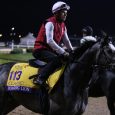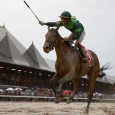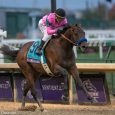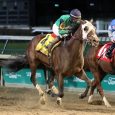The Preakness Stakes has mostly been a chalk-players’ heaven in recent years, and that trend is certainly good news for Kentucky Derby winner Justify, who is either at 2-5 or 1-2 odds on various morning lines and will surely be in that neighborhood come post time. Nevertheless, the second jewel of horseracing’s Triple Crown should not be overlooked by handicappers and horseplayers looking for wagering interests in an important race that is the cornerstone of one of the best racing and wagering days of the entire year.
Even though the Preakness Stakes at Pimlico has been anything but a haven for longshots in recent years, the 2017 winner, Cloud Computing, proved a horse can still win the Preakness at a price. He went off at 13-1 and paid $28.80 to win. The exacta with second-choice Classic Empire paid $98.40. Favored Kentucky Derby winner Always Dreaming was eighth. If you go back a few years, the 2013 Preakness winner Oxbow also posted a Preakness upset, paying $32.80 to win.
Handicappers looking for value will be in a quandary in the Preakness — especially with the race likely to be run on a wet track similar to the one Justify romped over in the Kentucky Derby. Is it worth trying to bet against Justify in the Preakness with Derby runner-up Good Magic or a higher-priced longshot? Or should the race be played with Justify as a “single” with the focus on multi-race wagers? A single in the Preakness could allow bettors some freed-up money they could instead use on “spreading” in other races.
Just because the recent trend in the Preakness has pointed toward chalk, including American Pharaoh in 2015, California Chrome in 2014, and so many others, that doesn’t mean that astute horseplayers can’t make money and cash profitable tickets if they know some important trends and factors to look out for that have yielded the majority of Preakness winners and exotics horses. These key factors — based on post position and running style — can help you come up with a legit contender or two, while at the same time eliminating one or more pretenders.
Pimlico’s Prevailing Bias: The Need for Speed and the Myth of the Inside Bias
First off, let’s look at a couple of misconceptions that often affect how horseplayers handicap Pimlico and the Preakness. The first misconception is about Pimlico having “tighter turns” than most tracks. The fact is, however, that Pimlico’s turns are no tighter than any other (typical) track. The turns may appear different than other tracks based on Pimlico’s odd dimensions, which include a very long stretch run that just so happens to offer no apparent help to the late runners.
The reason I mention the myth about the supposedly tight turns at Pimlico is because that one misconception often leads to another prominent misconception — that Pimlico is strictly an inside-biased track.
For years, handicappers have referred to Pimlico as an inside speed track when, in reality, they are only half right. Pimlico is, in fact, a generally a speed-biased track. Early speed horses and front runners (horses on the pace or within two lengths of the front at the first call) have the preferred running style at every distance on Pimlico’s main track. However, in recent years, Pimlico really has shown very little statistical indication that the rail, or any of the inside posts for that matter, are any better than the middle or outside posts.
This perceived inside bias, or lack thereof, is important for horseplayers to note when handicapping Pimlico, because the horses drawing the inside posts are almost always overbet due to their post positions. Since the inside posts no longer really offer any statistical aid to a horse’s chances of winning, however, handicappers are often left with overlay odds on the horses breaking from the middle or outside gates.
A look at recent Pimlico race meets shows middle and outside posts winning at good percentages each year, especially in two-turn route races where you’d expect innermost post positions to do best. The inside posts (1-3) are statistically no more likely to win than the outside posts (7-8). As a matter of fact, when rarely-used posts 12 and higher are removed from the equation, Pimlico outside posts actually have performed better than inside ones, based on win percentage and ROI, in Pimlico routes.
This kind of winning track profile information is not just helpful in making the right bets in the Preakness, it should be employed all weekend long to help handicappers cash tickets and stay alive in exotic wagers leading up to and including the third jewel of racing’s Triple Crown.
There is tons of betting action all day Friday and Saturday at Pimlico, but for horseplayers, of course it all comes down to the Preakness — which will probably make or break the weekend for most handicappers since it will be the lynchpin to so many bets, including rolling pick-3s and Saturday’s big guaranteed pick-4, pick-5, and jackpot pick-6.
Here are some angles to help you come up with the Preakness winner and exotics.
Preakness Post Positions
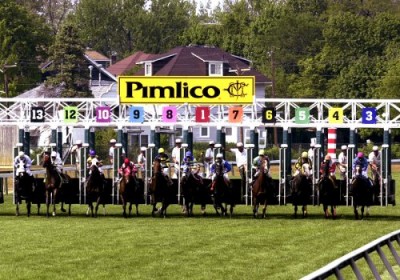 The commonly-held beliefs about the negative impact of outside draws in the Preakness are false, according to the statistics from Pimlico in races run at the Preakness distance of 1 3/16 miles. In fact, just the opposite is true, it is the inside posts that are putrid in the Preakness.
The commonly-held beliefs about the negative impact of outside draws in the Preakness are false, according to the statistics from Pimlico in races run at the Preakness distance of 1 3/16 miles. In fact, just the opposite is true, it is the inside posts that are putrid in the Preakness.
Each year at the Preakness post draw, the big story seems to be about everyone trying to avoid the far outside posts. In truth, it is likely to mean very little in 2018 with a field of only eight horses entered for the Preakness — the smallest since only eight ran in 2000 and only seven ran in 1986. Either way, Justify’s chances certainly weren’t hurt when he drew post 7 in his quest to annex the second jewel of the Triple Crown.
Not only don’t the inside gates hold an advantage over the middle and outside posts in the Preakness, but they are actually disadvantages, both according to statistics from recent Preakness runnings, and from more recent statistics compiled from Pimlico the last several years in races run at the 1 3/16-mile distance. Moreover, it should be noted that the rail post is the worst place your horse can break from in the Preakness, and is one of the worst possible places your horse can break from in any race all year long.
Handicappers all seem to acknowledge the rail disadvantage in the Kentucky Derby, but mostly everyone overlooks it in the Preakness. This angle paid tremendous dividends in 2013, because it helped to eliminate the Preakness favorite, Kentucky Derby winner Orb, who drew the Preakness death rail and finished out of the money at odds-on.
Of course, this angle came to an end for many handicappers in 2015 when eventual winner American Pharoah broke from post 1. But the reality is that a horse like American Pharoah has literally not come around for a generation and, before he won, even his trainer, Bob Baffert, seemed concerned that the one-hole could potentially derail his horse’s Triple Crown chances when he said: “You don’t like to be on the inside, but we’ll have to deal with it.”
American Pharoah was good enough to overcome the rail in the Preakness, but most horses are not — even good, but not great, horses like Orb. Other than Tabasco Cat, who was victorious from the rail back in 1994, no other Preakness winner has come from the rail since Belly Ache in 1960.
Even with American Pharoah winning in 2015, there now have only been two Preakness winners from the rail post in the last 57 years.
In fact, it had been several years since a rail horse had even hit the board in the Preakness before Macho Again finally hit the exacta after breaking from the rail in 2008. Before Macho Again, the last Preakness rail horse to even reach the superfecta was Lion Heart back in 2004. In fact, when Astrology bucked this trend by finishing third from the rail post in 2011, his feat did not receive nearly enough recognition, because he was another rare exception to the rule.
The horse that drew the rail this year was Quip, who is the likely third betting choice in the race at 12-1 odds. I have no problem downgrading Quip based on his rail Preakness draw.

Justify (photo by Jordan Thomson).
As for Justify and the outside posts that everyone always tries to avoid in the Preakness for some unknown reason, statistics show that the outside posts have actually been the best places to be in recent editions of the Preakness. Recent Preakness winners breaking from posts 8 and outward include the aforementioned Rachel Alexandria in 2009 (post 13), I’ll Have Another (post 9) in 2012, Bernardini (post 8) in 2006, Afleet Alex (post 12) in 2005, Funny Cide (post 9) in 2003, War Emblem (post 8) in 2002, Point Given (post 11) in 2001, and Silver Charm (post 10) in 1998.
Take special note the 2012 and 2013 editions of the Preakness. In 2012, the Preakness was dominated by the favorites, so it is difficult to say if post positions helped at all, but let’s just say they sure didn’t hurt. The eventual top 3 finishers — I’ll Have Another (post 9), Bodemeister (post 7), and Creative Cause (post 6) — all broke from the outside half of the field. In 2013, the outside again was a tremendous angle. In a nine-horse field in the Preakness, the top three finishers all broke from the outside half of the starting gate with Oxbow (post 6), Itsmyluckyday (post 9), and Mylute (post 5) yielding a $301.40 exacta and a $2,061.60 trifecta.
Preakness Running Style
After post position, the next factor to concentrate on when handicapping the Preakness is running style. In this department, unlike the myth of the inside bias, the commonly held notion that speed and tactical speed are good at Pimlico have proven to be correct.
The 2017 Preakness winner Cloud Computing and runner-up Classic Empire both benefitted from their pace-pressing running styles. American Pharoah outclassed the 2015 Preakness field and led wire-to-wire. California Chrome pressed the pace en route to winning the 2014 Preakness. Speed was also king in the 2013 Preakness, when Oxbow won the race in wire-to-wire fashion at 15-1 odds, and the other two pace horses in the race, Itsmyluckyday and Mylute, held on for second and third.
The 2012 Preakness winner, I’ll Have Another, stalked and pressed the pace about 2 to 2½ lengths behind the leader en route to victory over the front-running Bodemeister. Anyone who boxed the four pace-setters that year would have also hit the exacta and trifecta with third-place finisher Creative Cause.
With the notable exceptions of the dynamic Afleet Alex, who rallied from 10th place to win the 2005 Preakness despite clipping heels and nearly falling, and Curlin, who came from sixth to win the Preakness in 2007 after drawing the terrible two-hole in the Derby, almost every other recent Preakness winner has been on the lead or laying no more than a few lengths off the pace at the first call. Even when Preakness winners of the last 19 years or so came from father off the pace — such as with Point Given in 2001, Red Bullet in 2000, and Charismatic in 1999 — the eventual winners in those cases still could be termed stalkers who were able to make their moves into a pace-pressing position on the backstretch. Afleet Alex and Curlin were the rare recent examples of horses that won the Preakness with a true late-closing running style.
One horse with flat-out the wrong running style for the purposes of the Preakness is deep closer Lone Sailor. A few others have shown some tactical speed on some occasions and not others, including Good Magic, Sporting Chance and Bravazo. Those horses had better be willing to flash their best pace-pressing speed or else risk being too far back to make a dent in the Preakness, especially on a projected wet track.
The New Preakness Reality: Time Between Races
Horses with time between races do better as Preakness challengers than horses exiting losses in the Kentucky Derby. This is the new reality of the Preakness Stakes, just two weeks after the mile-and-a-quarter Derby. There are fewer and fewer Derby losers coming back to run in the Preakness, and more horses pointing to the Preakness as “new shooters” after missing, skipping, or not qualifying for the Kentucky Derby. This was clearly evident again in 2017. Of the 19 also-rans exiting the Kentucky Derby, only four of them ran in the Preakness — Lookin at Lee (2nd in the Derby finished 4th), Classic Empire (4th in the Derby and 2nd in the Preakness), Gunnevera (7th in the Derby and 5th in the Preakness) and Hence (11th in the Derby and 9th in the Preakness).
The 2017 Preakness winner Cloud Computing was a new shooter with five weeks in-between races since his last start in the Wood Memorial.
For the 2018 Preakness, three Kentucky Derby also-rans including Good Magic (2nd), Bravazo (6th), and Lone Sailor (8th) will take on four new shooters. Of the new shooters, three of the four have extra time between races including Quip and Tenfold (5 weeks since the Arkansas Derby), and Diamond King (4 weeks since winning the Federico Tesio). Sporting Chance lost on Derby Day in the Pat Day Mile.
What that means in terms of handicapping the Preakness, is choosing between:
- the Kentucky Derby winner, who will be the strong favorite.
- Taking select Derby also-rans.
- Trying the new shooters whose connections feel they have a better chance of winning the shorter Preakness, as opposed to the much longer Belmont Stakes.
Therefore, one of the most relevant handicapping trends bettors should focus on when making their Preakness picks is where the horse’s last race was and how well the horse did in that last race.
Of the 21 Preakness winners from 1997 to 2017, 11 were Derby winners, three had hit the board in the Derby (not including Shackleford in 2011, who at least hit the superfecta) and four had skipped the Derby entirely in order to point directly for the Preakness.
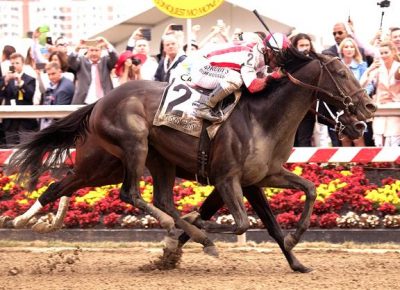
Cloud Computing storms past Classic Empire late to win the Preakness Stakes (photo via Jim McCue, Marlyland Jockey Club).
The four recent Preakness winners that skipped the Derby — Cloud Computing in 2017, Rachel Alexandra in 2009, Bernardini in 2006 and Red Bullet in 2000 — all exited good efforts in other top races. Rachel Alexandra demolished the field in the Kentucky Oaks, while Cloud Computing, Bernardini and Red Bullet all had finished in the money in the Wood Memorial in their most recent races before being pointed directly to the Preakness.
Since it seems to be important for Preakness candidates to have won or run well in the Derby, or to have skipped the Derby to point for the Preakness following a good effort in another top stakes race, horses that have good chances in Preakness based on this angle include the superfecta finishers in the Kentucky Derby, plus select new shooters who finished first or second in a major Grade 1 prep race (for example, the Wood Memorial or the Kentucky Oaks). Other Preakness new shooters, or horses well-beaten in the Derby, are likely just taking shots in the Preakness and probably won’t be serious contenders at Pimlico.
Under this angle, the only legitimate contenders to Justify in the Preakness field will be Quip, who was second in the Arkansas Derby five weeks ago, and Kentucky Derby runner-up Good Magic.
Bet Pimlico on Preakness Weekend!
If you add up all the plusses and minuses from the trends above, no horse really ticks all of the boxes in the quest to deal Justify his first career defeat, with the possible exception of Good Magic — only if Good Magic is able and willing to race closer to the pace than usual in the Preakness.
Quip fits well on several levels, but becomes a non-play based on his putrid rail post position. The final x-factor in the Preakness could turn out to be the track condition, with a wet track again likely Saturday at Pimlico. However, the horses in the race with the best off-track credentials are Justify and Good Magic, based on their 1-2 finish on the sloppy track in the Kentucky Derby. Overall, these trends are not good news for players looking to bet against Justify, or perhaps second favorite Good Magic on Preakness Day.
Even if Maryland racing is not your forte, the racing at Pimlico is worth watching and wagering for all serious horseplayers all throughout Preakness weekend.
Good luck and good racing at Pimlico and in the Preakness!


